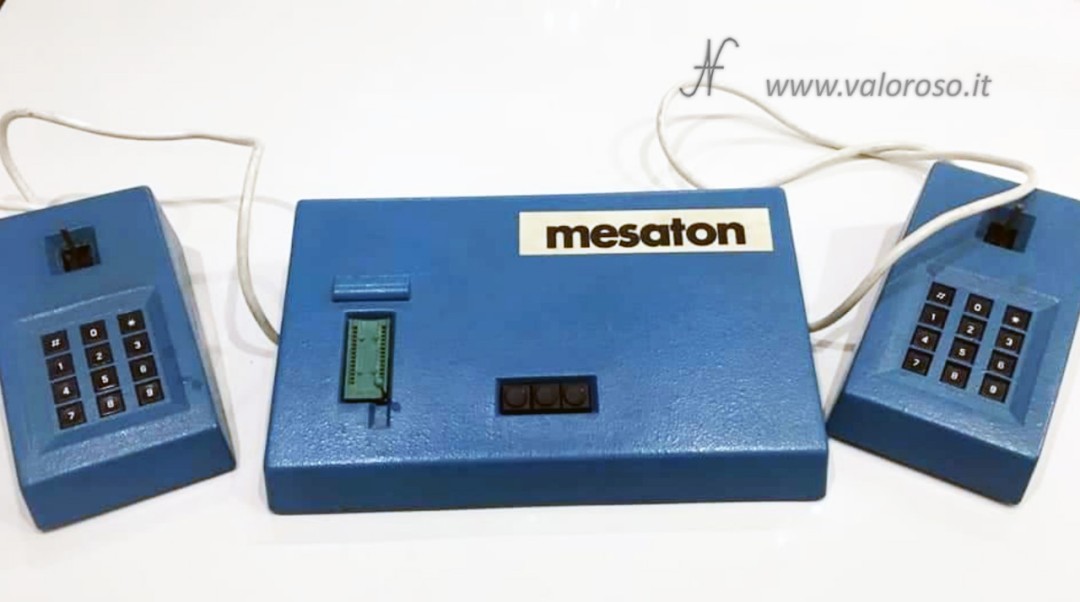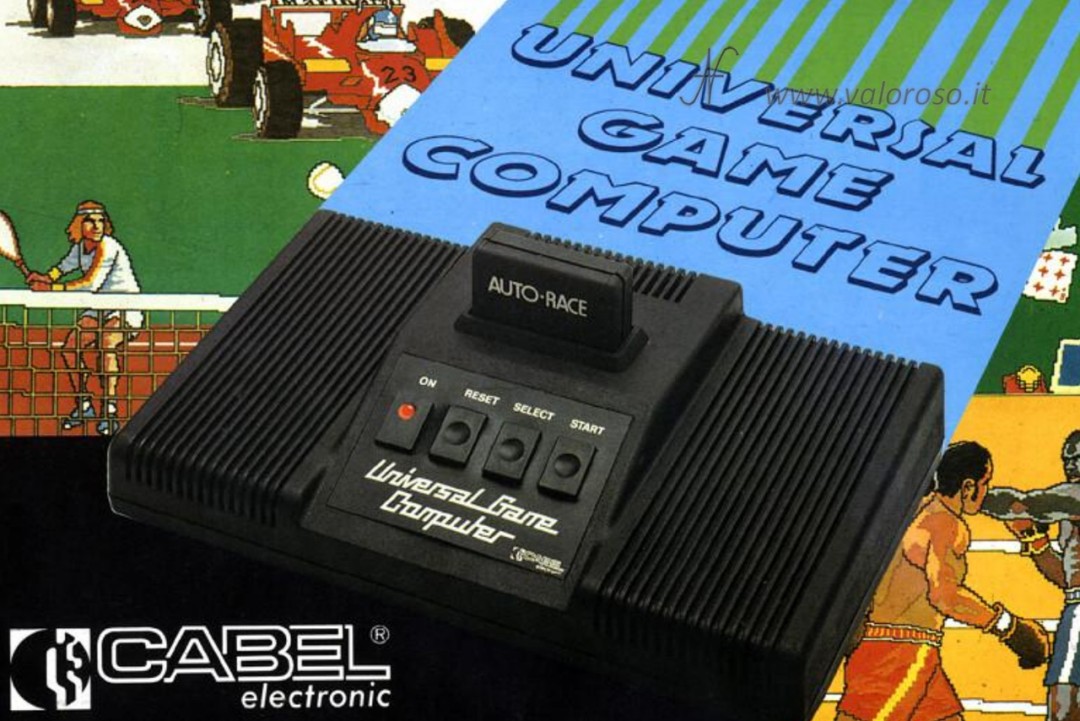In the 1970s, the video game industry was just beginning to take shape globally, with projects and consoles seeking to capture gamers' imaginations in a new and fascinating world. While big names like Atari began to emerge on the international scene, some initiatives were developing in Italy too. Two of these were the Mesaton and the Universal Game Computer. Andrea Contato talks to us about it, in a conference recorded on the occasion of Varese Retrocomputing 2023.

Mesaton
The Mesaton, developed by Mesa 2 SpA under the guidance of Alberto Neri, represents one of the first Italian consoles dedicated to video games. This console was an example of how Italy was trying to carve out its own space in the nascent gaming market. The Mesaton used components produced by Signetics Corporation, a semiconductor manufacturing company, later acquired by Philips.

The beating heart of the Mesaton is the Signetics 2650 chip, an 8-bit CPU designed for use in a variety of applications. This processor, marketed in 1975, although designed 2-3 years earlier, was particularly suitable for its low cost and flexibility, essential characteristics for a video game console. For graphics, the Mesaton relied on the Signetics 2636 chip, a video microcontroller designed specifically to handle sprites and graphics on television screens.
Universal Game Computer
Parallel to the Mesaton, another project was taking shape in Italy: the Universal Game Computer. This device, developed by Cabel Electronic of Curno, in the province of Bergamo, represented another significant example of Italian technological innovation in the field of video games. Although the Universal Game Computer was similar to the Mesaton in concept and purpose, it was distinguished by some features that made it unique.

The Universal Game Computer also used Signetics chips, however, what really set this console apart was its presentation and packaging. Cabel Electronic had invested considerable resources to ensure that the Universal Game Computer was not only a functional device, but also an aesthetically pleasing and easily recognizable one for consumers. This aspect, often overlooked by competitors, has allowed the Universal Game Computer to gain a certain notoriety on the market.

The decline
Despite the innovation and ingenuity behind the Mesaton and the Universal Game Computer, their success came to an end. The arrival of larger and better financed competitors, such as Commodore with the Vic20 and, later, with the Commodore 64, quickly led to the decline of the Italian consoles. These new devices offered greater computing power, better graphics and, above all, a large catalog of games and software, making it difficult for the Mesaton and Universal Game Computer to compete.
Papers
1. Signetics 2650 microprocessor datasheet
2. Signetics 2636 PVI programmable video interface datasheet
Speaker: Andrea Contato
Presenter: Sergio Gervasini
Filming and audio: Fabio Massa (BioMassa) and Mariangela Sapia